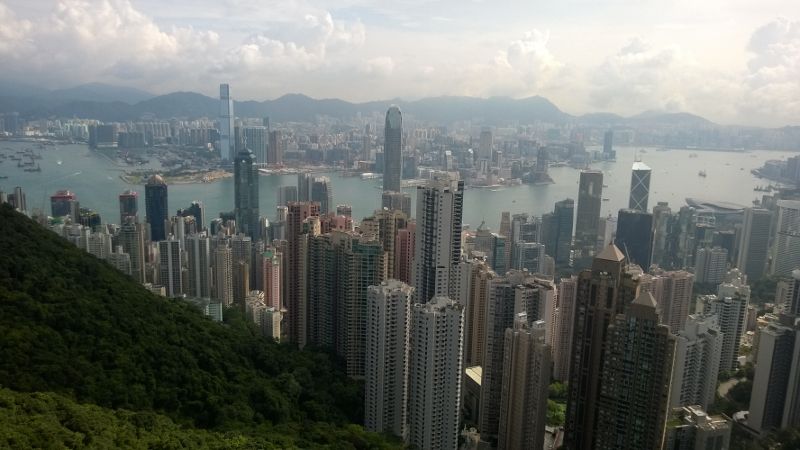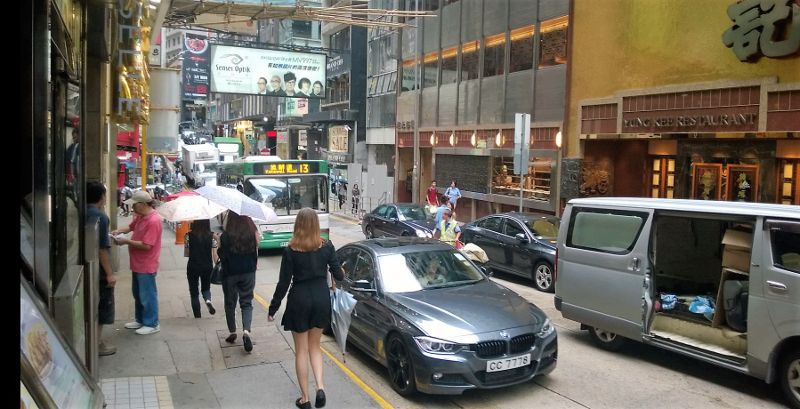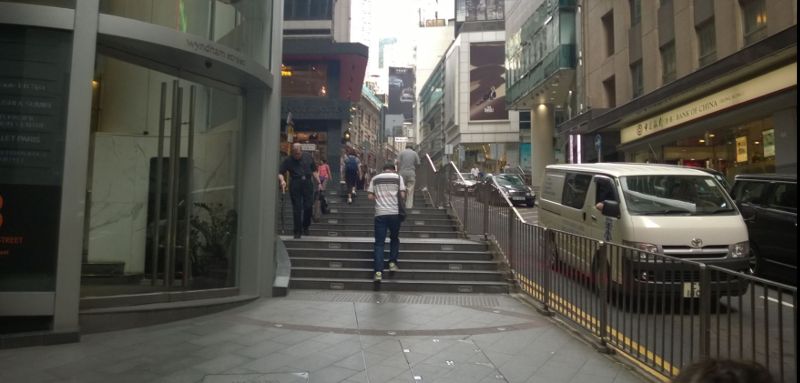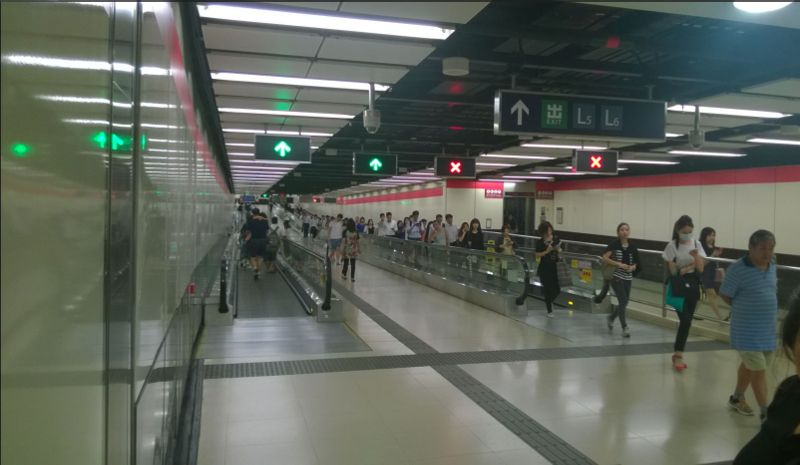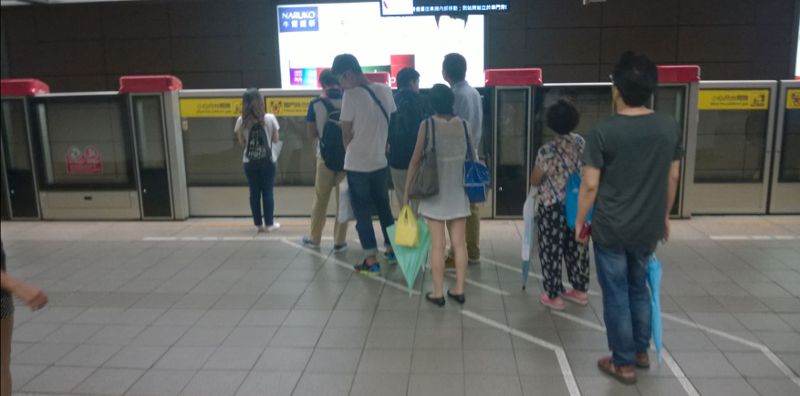Hong Kong in 1870
On a recent trip to Hong Kong it was hard not to be amazed at the constraint of the land, how the City has been constructed and how people live in comparison to in Sydney. From its origins in 1870, shown below, Hong Kong has now grown to be one of the most densely populated cities on earth.
Hong Kong in 2015
With constraints in geography and very tall buildings, Hong Kong has developed a number of ways to help move people around. This includes a fantastic metro train system, abundant taxis, as well as buses, ferries, trams and an escalator all forming part of the public transport network. But despite the extensive public transport network, virtually all trips will start and end with walking.
Hong Kong is not very friendly for people with mobility difficulties and often the footpath is so steep that steps are provided. This reminds me of areas in the Eastern Suburbs of Sydney where the topography is too steep for footpaths.
A busy street in Hong Kong
Steps in the footpath on Wyndham Street
In one place though, the height difference is so great that the Government constructed a series of 18 escalators and 3 moving walkways to better connect Central and the Mid-Levels (an area about half-way up the hill inland from Central). The system opened in 1993 and in 2010 carried around 85,000 people a day. From 6am to 10am, the system runs down the hill and from 10am to Midnight[1], the system runs up the hill allowing people who live in the area to become escalator commuters. The walking distance from the start to the end of the system is approximately 850m long and it rises approximately 135m in height[2].
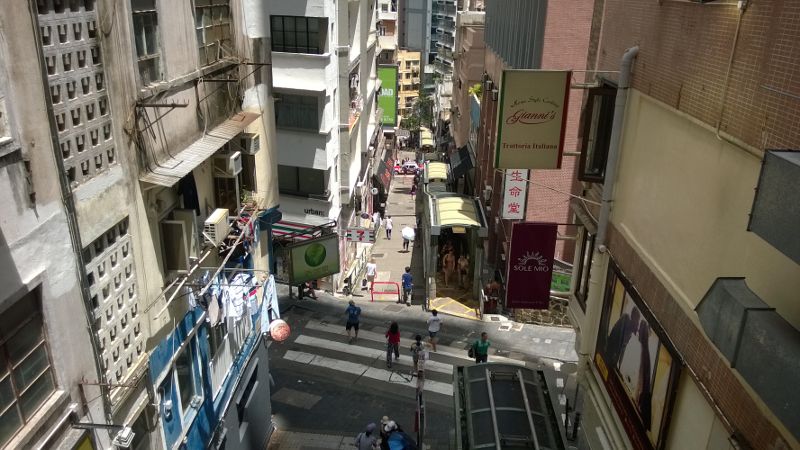
Central to Mid-Levels Escalator
In Sydney, driving is the most popular way to travel to work and to help that happen, there are a number of tidal flow lanes which change throughout the day according to the amount of traffic on the road such as on the Sydney Harbour Bridge. But in Hong Kong, this happens for pedestrians. Underneath Tsim Sha Tsui station, there are arrows which change depending on the time of the day to help manage the pedestrian flows.
Tsim Sha Tsui Station Pedestrian Management
In the same trip, I also visited Taipei. While here in Sydney there is a sort of general courtesy of letting people off before boarding, it isn’t really that strictly enforced and outside peak times things are a little more casual. At Town Hall Station during peak times there are some lines drawn on the ground that are sort of followed, but in Taipei, even at quiet times, order is quite strict for the boarding alighting on the subway.
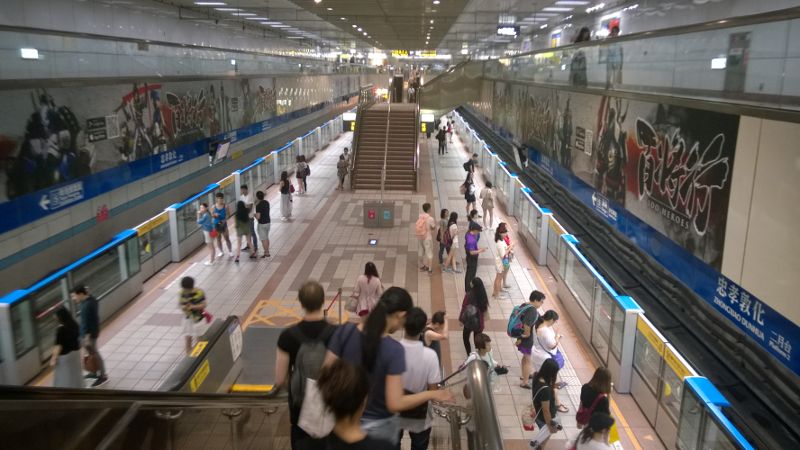
Taipei Ordered Train Queuing
Taipei Ordered Train Queuing
Although I am not that well-travelled, I have seen a few different systems in different cities around the world. Of all the countries I have seen, the operation of the trains and pedestrian management is the best in Hong Kong. But sometimes necessity is the mother of invention.
Where in the world do you think the most innovative approach to pedestrian management is?
[1] http://www.td.gov.hk/en/transport_in_hong_kong/pedestrianisation/hillside_escalator/
[2] Based on data from Google Earth / Google Maps
References last accessed 13/12/15
Author: Matthew Houlden


